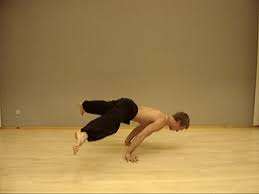I threw out my back on Friday doing deadlifts and this is starting to become a yearly occurrence. Last time I did this was around the Christmas season and, like an idiot, I didn't allow it to properly heal. I didn't ice it from the get go and every time I thought I was feeling better I would go straight to deadlifts and re injure myself. Needless to say, it took lot longer than it should have to heal because of my own eagerness to get back under a barbell.
I really love to lift heavy weight, it makes me happy but I definitely won't be able to do it for ever and heavy deadlifts may not be an option any more.
I have a condition in my spine known as a Pars Defect and I believe it may be catching up to me. This means I now face the prospect of making some drastic changes to my own training regimen.
Using your own body as resistance
I have always been a huge proponent of body weight training and have been fascinated by the feats of gymnasts and masters of hand balancing. These are the people who I believe have the greatest relative strength of any athlete. I have used this type of training before to rehab back injuries with great success and may now have to change my training to center on these exercises instead of supplement with them.
Let's start with the basics. We have planks, push ups, sit ups and pull ups. These form the foundation of any bodyweight regimen and is where we should begin. There isn't a ton of mystery here and these exercises can be worked on the a great deal of proficiency. There are even entire websites dedicated to getting 100 push ups in a single set and a site on the way dedicated to getting 25 pull ups.
As I stated you can and use these exerises indefinitely to achieve a great amount of relative strength (strength to weight ratio). Eventually though you may become bored with the same exercises over and over and wish to aspire to some new feats to bodyweight greatness.
Lever, Planche and Manna
These static holds are the measurement of gymnastic strength. They involve all the muscles of the core chest and shoulder girdles. They require such intense contraction to achieve and hold that training them to any degree can have great benefits to anybody willing to dedicate some time and effort. They are difficult and require a great deal of skill to master but the idea is to start slowly.
Front and back lever
When learning the levers you will need to start with the tuck versions. Begin with the tuck front lever, when you can hold the tuck lever for 60 seconds then it is time to move on to the advanced tuck lever and then on to the full front lever. Follow the same progression s for the back lever as well.
Tuck front lever Advanced tuck front lever
Front lever Back lever
Planche
Same as with the levers, when learning to hold a planche you will have to start with the most basic tuck versions, beginning with the frog stand. You may have to begin the frog stand with your head on the floor until you get the strength and balance necessary to raise your head off of the floor. Don't get discouraged the first few levels of progression cone fairly quickly.
Frog stand
Tuck Planche

Manna
Manna is an extremely difficult move to learn. For anybody who has dedicated the necessary time to learn it it is the hallmark of extreme bodyweight control along with the iron cross
Ring training
If asked what is the single most effective piece of strength training equipment I own, I would say without a doubt, it is my rings. Gymnastic rings provide a tool for training all of the upper body muscles i all the ranges of motion and under unlimited tension. They can be used for pull ups, muscle ups, dips, levers, planches. The list goes on and on. They can be lowered to just above the floor to add difficulty to push ups. You can add them to any upper body bodyweight exercise to increase the challenge. They are pretty cheap to puck up from amazon.com and I personally have to most fun with my rings than with any other piece of equipment i own.
Freedom
The single greatest advantage to bodyweight training is it is so convenient and accessible. You can do it anywhere and any time.... for free. Playgrounds are wonderful and anybody who has seen me cut loose on a set of monkey bars will agree. You do not need a gym to get a great workout
LOVE this post and can't wait to see more BW WODs!!!
ReplyDelete